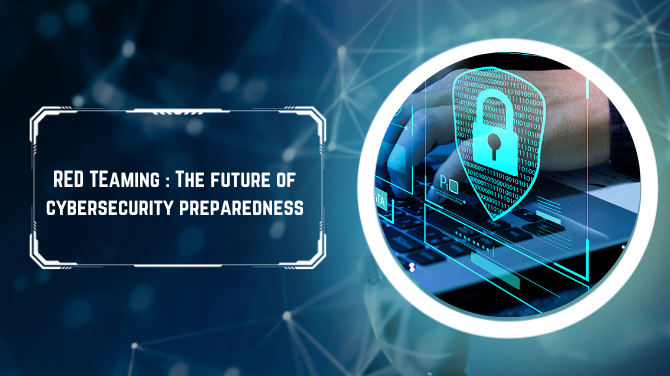Red teaming : The future of cybersecurity preparedness

November 23, 2023
 114
114
In today's increasingly complex and interconnected world, organizations face a growing threat from cyberattacks. These attacks can have a devastating impact on businesses, governments, and individuals, causing financial loss, reputational damage, and even physical harm.
As a result, organizations are under increasing pressure to improve their cybersecurity posture. One way to do this is through red teaming.
What is red teaming?
Red teaming is a cybersecurity assessment methodology that involves simulating a real-world attack on an organization. A team of ethical hackers, known as red teamers, will use a variety of techniques to try to gain access to an organization's systems and data.
The goal of red teaming is to identify and exploit weaknesses in an organization's security posture. This information can then be used to improve the organization's defenses and better prepare it for future attacks.
Why is red teaming important?
Red teaming is important because it provides a realistic and comprehensive assessment of an organization's cybersecurity posture. Unlike traditional vulnerability scanning and penetration testing, red teaming takes into account the human element of security.
Red teamers will try to bypass security controls and gain access to systems using the same techniques that real-world attackers use. This means that red teaming can identify weaknesses that traditional methods may miss.
What are the benefits of red teaming?
There are many benefits to red teaming, including:
- Improved identification of vulnerabilities: Red teaming can help organizations identify vulnerabilities that they may not be aware of.
- Increased visibility into attack methods: Red teaming can help organizations understand how attackers operate and what methods they use to gain access to systems.
- Enhanced security posture: Red teaming can help organizations improve their security posture and make it more difficult for attackers to succeed.
- Reduced risk of cyberattacks: Red teaming can help organizations reduce their risk of cyberattacks by identifying and fixing vulnerabilities before they can be exploited.
What is the future of red teaming?
Red teaming is a rapidly evolving field, and there are a number of trends that are likely to shape its future. These trends include:
- Increased use of automation: Red teamers are increasingly using automation tools to help them with their work. This allows them to test more systems and data more quickly.
- Greater focus on cloud security: As more organizations move their data to the cloud, red teamers will need to focus on cloud security testing.
- More sophisticated attacks: Attackers are becoming increasingly sophisticated, and red teamers will need to keep up with the latest attack methods.
Conclusion
Red teaming is a critical part of any organization's cybersecurity strategy. It can help organizations identify and fix vulnerabilities before they can be exploited, and it can help them improve their overall security posture. As the threat landscape continues to evolve, red teaming will play an increasingly important role in helping organizations stay ahead of the curve.